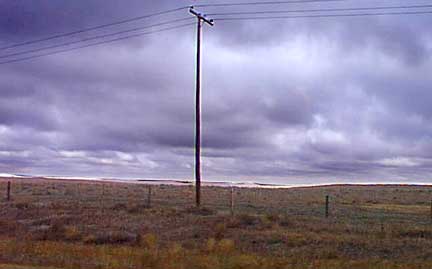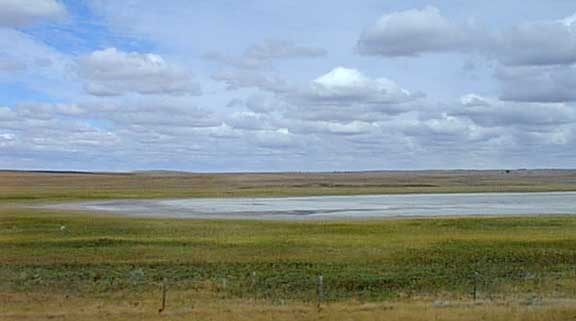 |
| FTLComm - Maple Creek - Wednesday, September 12, 2001 |
 When the 2001 crop year began the reserves of moisture in the soil of the Saskatchewan Southwest were low but timely showers germinated a crop that emerged and that was pretty much about all that happened. Farmers right around Maple Creek had to make the grim decision as to leaving what little was in the field or trying to get something in the bin. Many decided against harvesting all together and will try again next year. We talked to Harvey Eckart who |
 |
 farms just a couple of miles East of the town site of Maple Creek and he had a go at trying to harvest what little crop was there. What he got was some remarkable wheat that is off the scale with protein content but most fields yielded between three and five bushel to the acre. Harvey had calculated the cost of insurance and what it would pay out and had decided not to buy crop insurance this year. Already he and other cattlemen in the area have already reduced their herd by thirty percent and have been feeding their livestock all summer long. The images at the top of the page show the incredible desert conditions that are seen as you head from Swift Current toward Maple Creek, every ten minutes it seems still dry and less vegetation growing on a parched land. Similarly as the same rate things seem to be slightly greener as you head from Swift Current toward Herbert and Morse where the dishes have some green. Perhaps the most surprising sight of all was the amount of crops left standing in the fields between Belle Plain and Regina where it appeared as little as half of the crops had been harvest. They are either left for late germinating plants to mature or the farmers have decided to leave it, work it in and try again in 2002. One farmer from Piapot explained to me that the drought though considerably worse than 1988 was patchy as modern agricultural practices can get a crop with very little moisture and he explained that he had neighbours only miles away who were getting reasonable yields while his fields were not worth the fuel to harvest. One remarkable difference was seen near Morse. In 1988 Rush Lake, the huge shallow pond that stretches along the South side of highway one mile after mile still has water in it where as in 1988 it was a dry lake bed. This suggests that they moisture was spotty in the area and though extremely low it had specific local conditions. (The alkali pond shown on this page is near Gull Lake and you can see that the area surrounding the dried up slough is still has some green. |
 |